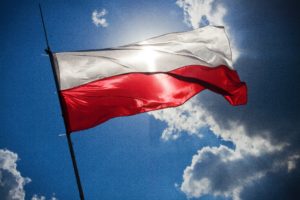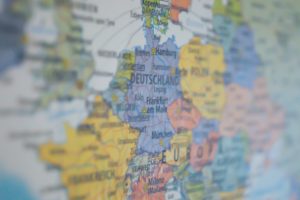By Sergiusz Prokurat
Source: Warsaw Business Journal, Number 08/09 (47), August/September 2018

Starting in September 2018, Poland will become the first country from Central and Eastern Europe to be included in the exclusive group of 25 developed markets, according to FTSE Russell. What does this mean for our economy and capital markets and should it change anything in the eyes of investors?
Poland as a society is becoming wealthier year by the year. A dozen years ago the average monthly salary in the business sector, according to the Central Statistics Office, stood at PLN 1,900. Now it is at PLN 4,500. More than 1 million Poles earn over PLN 85,000 a year. 1. ………………… Poland was launched on a path of economic development as recently as 1989.
Almost 100 years ago, Józef Piłsudski, a key historical figure in Poland, claimed that Poland is like a pretzel, so everything that is of any value lies alongside its borders. And on the map during the interwar period this was true: the Tri-City with its access to the sea, Łódź with its booming textile industry, Katowice and its coal deposits. Over time, the role of Warsaw increased. After World War II some pieces of the pretzel were missing: Lviv and Vilnius – instead Poland got Wrocław and Szczecin.
The catalog of 20th-century economic fiascos started with the two world wars, which caused huge losses in the national wealth (they cost 25 percent of GDP), and then continued with the economically unimpressive period of communism. In 1990, when Poland transformed into a market economy, the level of GDP per capita was approx. 30 percent of the average levels seen in Western Europe. The threshold of 50 percent, which Poland had tried to leap over for the entire previous century, was finally broken in 2008 and today Poland is at the level of 75 percent of the West. For the first time in the country’s thousand-year history, it has become imaginable that it could catch up to Western Europe in 20-30 years. 2. ………………….
On the radar

For many observers, Poland has been an economic star over the past two decades. Continuous economic growth, dynamic improvement of the quality of human capital and the development of capital market have given investors in Poland better economic growth rates in comparison to other developed countries.
Long-term market observer FTSE Russell Agency (or “footsie,” as it is commonly known), a British provider of stock market indexes and associated data services, classified Poland for the first time in 2004 as a secondary developing market with the following improvement areas: currency trading market, market for lending securities, the availability of adequate fiduciary accounts and the derivatives market.
In 2011 Poland was transferred to the watchlist for possible reclassification as an emerging market.
Since 2015 the Poland’s position was again considered a potential new member of the FTSE index of developed markets. 3. ………………… For classification purposes, the Fund takes into account i.a. the regulatory environment, infrastructure and the quality of the capital market, the structure of the deposit and settlement system, the development of the derivatives market and also income per capita, the level of exports and whether the country has already joined the eurozone or intends to join it.
In order to stand among developed countries, one basic condition must be met – achieving income per person of at least $15,000-18,000 per year. In Poland this indicator now oscillates around $13,000-15,000, but only 25 years ago it stood at $2,000.
More capital coming

What does it actually mean for Poland to be classified in the group of developed countries? FTSE Russell indexes are used by leading global investment funds. Soon, Poland will stand in line with such countries as Germany, France, Japan, Australia and the US. This is good news, because it means that Poland will be a destination for a greater group of foreign companies looking to invest their capital. A larger pool of institutional money will be funneled to the Polish market, which may generate the spiral of demand for capital and shares and thus improve the quotations of companies listed on the Warsaw Stock Exchange. There are many ETF funds (exchange-traded funds) based on indexes such as FTSE Russell, listed on stock exchanges on the same basis as shares.
Poland ascending to the ranks of developed countries also means that the risk of recession, objectively analyzed by independent parties, or the risk for conducting business activity, declines. 4. …………….. This was also the case in Brazil and Indonesia. Poland’s accession to the EU was another stimulus and the fact that Poland was one of the few countries that did not slump into recession in 2009 gave it another boost.
Not unanimous

FTSE’s decision, however, was not unexpected. Poland was already announced as developed country by the UN, and the World Bank recognized Poland as a wealthy country. We need to remember, however, that there is no single definition, standard or clear distinction between a developed and a developing country. The boundary is conventional. 5. ………………… For the past few years, companies willing to join the main trading floor have been analyzed with a fine-tooth comb. The diversity of different financial instruments has increased, modern transaction systems have been implemented and the standards in the banking sector have improved. Poland has all the advantages of the developed markets, including trading and transaction services safety, and a well-developed infrastructure.
Does that automatically mean that the Polish economy is eligible to be on the list of developed countries and that the country can be classified as rich? It is noteworthy that according to the second largest index, MSCI, calculated since 1970 by the American investment bank Morgan Stanley – maybe even more important than FTSE – Poland is still a developing country.
Grass is greener

The promotion to the group of developed countries does not mean a sudden transformation. The level of GDP per capita does not directly translate into living conditions for the majority of Poles.
Is Poland in fact wealthy and developed? As usual, everything depends on whom you compare it with. 6. …………………..Poles still like to compare themselves to their western neighbors, rightly stating that the average German is far better off. Incidentally, Germans have also never in history lived in such prosperity as they do today.
Also, just as any country, Poland has to deal with social stratification, disparities between large cities and small towns. For instance, the earnings of 2/3 of working Poles are below the average remuneration in the economy as a whole, being less than €1,000 a month. A Pole’s wallet is even 10 times thinner than that of an average Liechtenstein citizen, according to a report prepared by GfK Purchasing Power Europe 2017, which shows the real purchasing power of Europeans. Currently, the average inhabitant of the Old Continent earns €14,000 yearly, which is something around PLN 60,000. 7. ………………………
Still, FTSE Russell’s decision is backed by a host of other indicators. Poland now has historically low unemployment, the level of which is the lowest since the transformation (approx. 6 percent), the highest growth in the past six years (approx. 4 percent), and despite large social expenditures, the budget is in good shape due to effective sealing of tax revenues. For the first time since national pollster CBOS started measuring it, the percentage of households living on credit is lower than the percentage of households with savings.
It cannot be overlooked that, in the last 10 years, the financial assets of Poles have almost doubled and reached almost PLN 2 trillion, according to data collected by the National Bank of Poland. And despite the disparities, in 2015 Poland joined the elite group of 40 countries (ranked in 36th place) with the highest quality of life.
American political scientist Samuel Huntington placed Poland among Western countries a long time ago. When we take cultural background into account, Poland has been there almost since its very beginnings. 8. …………………… Particularly because in the coming years Poland could well join the ranks of the 20 largest economies in the world.
Poland is ranked in 27th place in the region of Europe and Central Asia in terms of wealth per capita estimated to be $155,000 per capita, as indicated in the report “The Changing Wealth of Nations 2018,” which analyzes the level of wealth in 141 countries in the years 1995-2014. In our region Poland was overtaken by Hungary – $156,000 per capita, Lithuania – $169,000 per capita, Slovakia – $230,000 per capita and Latvia – $230,000 per capita.
Glossary:
- prosperity – dostatek
- threshold – próg
- fiduciary – powierniczy
- to funnel – skierować
- to ascend – iść w górę
- to slump – gwałtownie spaść
- be eligible for – kwalifikować się
- disparity – rozbieżność
- unattainable – nieosiągalny
- vast majority – przeważająca większość












